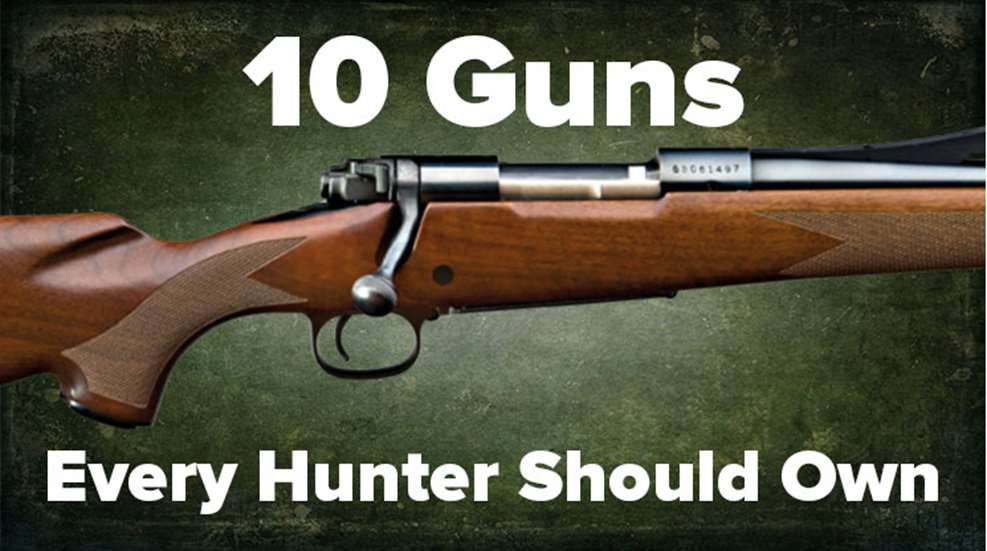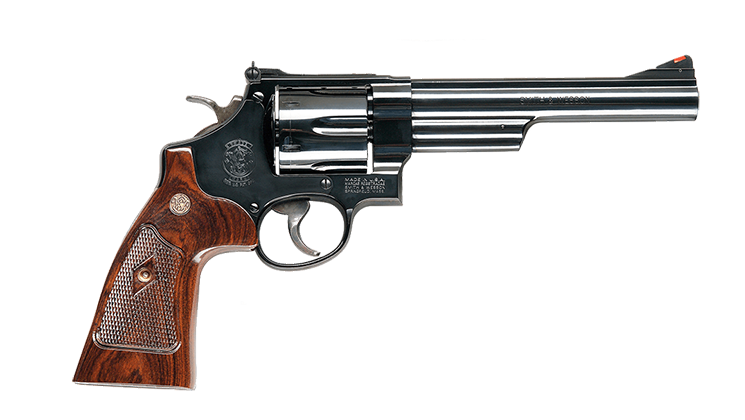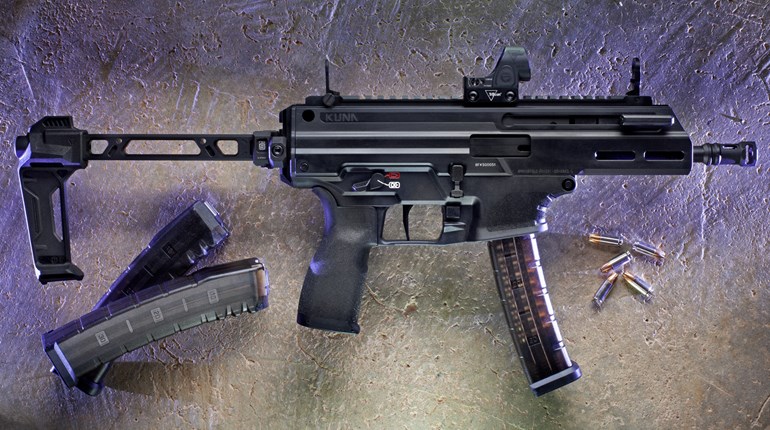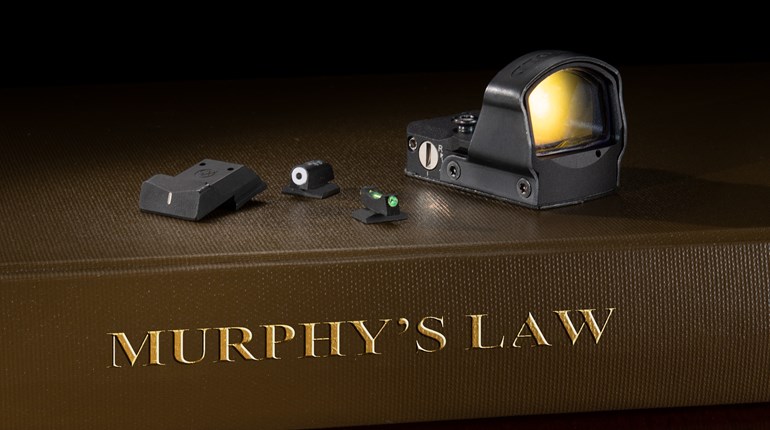
Perhaps the most opinionated argument of all time is, “What’s the best gun?” It all comes down to an unscientific determining factor known as, “What I like.” That said, here are 10 firearms I feel every hunter absolutely, positively, unequivocally has to have. In no particular order, these are the best of the best.

1. Remington Model 700
Introduced in 1962, the Remington Model 700 remains the quintessential hunting rifle. Since then it has been produced in a multiplicity of calibers and a bewildering plethora of variations. As Remington historian Roy Marcot notes, a stiff, cylindrical receiver, push-feed bolt with a recessed face for consistent cartridge positioning, unique bedding system and tight barrel-manufacturing tolerances combine strength with superb out-of-the-box accuracy. In short, the Remington 700 has something for every hunter.

2. Winchester Model 70
If ever there was the epitome of a classic bolt-action sporting rifle, it has to be the Winchester Model 70. Rightfully dubbed “the rifleman’s rifle” by the late, highly opinionated but extremely knowledgeable Jack O’Connor, the Model 70 has become legendary for its controlled-round-feed bolt and three-position safety. In 1964, the Model 70 fell victim to an ill-advised cost-cutting rampage (which was admirably corrected in 1991) that has forever given the rifle two identities: pre-’64 and post-’64 models, with pre-’64 versions commanding the most attention among collectors and nostalgic hunters.

3. Ruger No. 1
The single-shot hunting rifle magnifies everything we hold sacrosanct: sight picture, breath control, trigger pull, and making that first shot count—because one shot is all you’re going to get. Introduced in 1966, the No. 1 is an updated version of the Scottish Farquharson falling block hammerless design of 1872, which Bill Ruger admired and collected extensively. Although there may be fancier guns, the Ruger No. 1 is the ultimate single-shot.

4. Smith & Wesson Model 29
Elmer Keith, Skeeter Skelton and other members of the “.44 Associates” all felt that when it comes to handguns, bigger is better. Their focus on stoking up the .44 S&W Special cartridge resulted in the .44 Remington Magnum, which held a semi-jacketed 240-grain bullet that thundered out of the barrel at 1400 fps and struck with more than 750 ft.-lbs. of energy at 50 yards. In the mid-1950s, Smith & Wesson beefed up its Hand Ejector Fourth Model to handle what was at that time the most powerful handgun cartridge in the world. What Smith & Wesson introduced as simply “the .44 Magnum” became an immediate success, especially among hunters, and later was renamed the Model 29. It’s the only handgun a hunter needs.

5. Remington Model 870
With well over 9 million Remington Model 870s manufactured since 1950, this is the most prolific and popular pump-action shotgun ever produced. It also is one of the most reliable smoothbores ever built, thanks to twin action bars that give the pump action a ball-bearing smoothness that results in quick follow-up shots on fast-moving targets. In addition, the bolt locks into a barrel extension, making for a rock-solid action. As a hunting buddy says, “It always works.” From synthetically stocked marine models and camouflaged turkey guns to magnum duck guns and tactical models, the Remington 870 remains one of the most versatile and affordable pump-actions in the world.

6. Winchester Model 94
I have a special affinity for this classic deer gun, because it was the first big-bore rifle I bought. I took my first mule deer with it, thus perpetuating the Winchester Model 94’s reputation of having taken more deer than any other rifle in America. The Model 94 was the first repeating rifle to be adapted to smokeless powder cartridges, and when I was growing up in Arizona, the Model 94 and the .30-30 Win. cartridge were so indelibly intertwined that the gun was often simply referred to as a “thuty-thuty,” no matter what its caliber. In .30-30 Win., the gun is a hard-hitting, close-range hunting rifle, and although over the years a number of changes have taken place with the Model 94—mainly with the hammer and safety—it remains a leading lever-action.

7. Ruger 10/22
“From a technological point of view, the new 10/22 is one of the best things we have ever done,” wrote Bill Ruger to Jack O’Connor a few months before the semi-automatic 10/22 rimfire was introduced in 1964. Like everything the meticulous Bill Ruger conceived, the 10/22 is over-engineered, yet due to its well thought-out mechanics, it’s eminently affordable. Easy to shoot, disassemble, maintain and upgrade, the Ruger 10/22 is favored as an economical plinker and a fast-handling, small-game rifle. Perhaps its most revolutionary—an apropos word in this case—feature is the 10-shot rotary magazine, a concept that took its inspiration from Bill Ruger’s admiration of the rotary magazine in the Savage Model 99. To date, more than 6 million 10/22 rifles in numerous variations have been sold. Indeed, the Ruger 10/22 has taken the .22 rifle to places no rimfire has gone before.

8. Browning Superposed
In 1923, John Moses Browning was granted the first of two patents for what would become the world’s first commercially made over/under shotgun. Because the top barrel was affixed to the bottom tube, rather than alongside it as was common with double guns at the time, Browning called his new smoothbore the Superposed. Unfortunately John Browning suffered a fatal heart attack three years later, and the responsibility—and consequently the credit—for finally getting the gun into production fell to the capable hands of his son, Val. The Superposed was officially launched in 1928. First available in 12 gauge, a 20 gauge was eventually added and, finally, 28 gauge and .410-bore models. Over the years, the Superposed has been produced in escalating and constantly changing levels of excellence. S.P. Fjestad’s Blue Book of Gun Values lists more than 50 variations. Made up of more than 70 individual parts and requiring 155 different assembly steps, the Superposed remains an extremely labor-intensive and expensive gun to make. The Superposed is not cataloged in the U.S., although one may be special-ordered from a Browning authorized dealer, and it will be hand-built in Belgium to your specifications.

9. Hawken Rifle
Jacob Hawken set up shop in St. Louis—“The Gateway to the West”—in 1815, and soon began building “Rocky Mountain rifles” for trappers, explorers and frontiersmen. His rifles were bigger caliber, had thicker stocks and were heavier than most front-loaders of the period. Brother Sam joined him in 1822, and although the earliest rifles built by the pair were flintlocks, the majority of Hawken rifles were more reliable and desirable caplocks. It was their deep, slow-twist rifling that made Hawken rifles so adaptable to hefty powder charges—100 to 210 grains of blackpowder—and accurate out to 150 yards or more. Other distinguishing characteristics included two iron barrel wedges, a long trigger guard that helped strengthen the wrist of the stock, a teardrop-shaped cheekpiece, a fixed, full-buckhorn rear sight and German silver front blade, and a hooked breech that enabled the barrel to be removed for cleaning. Today, although many well-made but mass-produced muzzleloaders are labeled “Hawken,” it’s difficult to find an authentically designed Hawken rifle unless you have one created by a custom gunmaker. However, the Hawken definitely belongs on this list as a tribute to the mountain men who helped open the Far West.

10. L.C. Smith
By all accounts, in the 19th and 20th centuries the sidelock double-barreled shotgun belonged to the British. Only one firearms manufacturer emerged with the mechanical skills to produce an American hammerless sidelock, an elegant, sturdy shotgun that took the name of its creator, L.C. Smith—or “Elsie,” as this well-designed side-by-side was affectionately called. Clearly, the L.C. Smith shotgun was geared toward sportsmen who wanted the best and were willing to pay for it. The same holds true today, even though a sidelock Elsie hasn’t been produced since 1971.
■ ■ ■
Editor’s Note: This list is adapted from Rick Hacker’s 50 Famous Firearms You’ve Got to Own, a 176-page collection detailing the history, developments and shooting characteristics of the “best” guns ever made—according to the author, that is. It’s available as a hardcover or an e-book from Gun Digest Books at gundigeststore.com for $23.99.





































